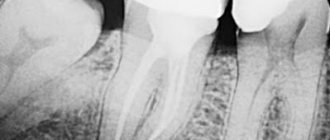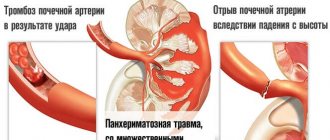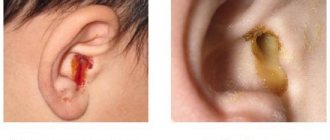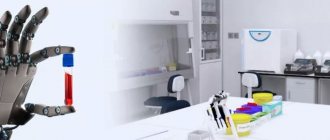Discharge of blood from the anus can occur during defecation, mixing with feces, and also be independent. If you identify this symptom, you should not immediately worry and panic, because the causes of this phenomenon can be the most harmless: microtrauma of the rectum or its damage from solid feces. But if this is not the first time you notice such discharge, and it is chronic in nature, and the abundance of discharge increases, then these are direct prerequisites for visiting a proctologist. After all, this phenomenon may be evidence of serious and chronic diseases: hemorrhoids, fissures, diverticulosis, rectal tumors, etc.
OUR ADVANTAGES
High professionalism
Head of the department – Doctor of Medical Sciences, Professor. Certified specialists with more than 10-30 years of experience.
Latest equipment
In 2014, new imported equipment was purchased for the operating room and diagnostic rooms
Comfortable living conditions
The department has been renovated, all rooms have their own bathroom
A delicate problem
To a delicate problem - an individual, delicate approach
Causes of bleeding from the anus
If you notice blood on toilet paper after bowel movements, even if the process of bowel movement occurs without pain, you should definitely consult a proctologist for advice in order to establish the cause of the bleeding, start treatment in a timely manner and avoid possible complications.
Why does blood appear from the anus after stool in both men and women:
- A fairly common factor is hemorrhoids (enlargement of the veins of the rectum). Scarlet blood appears from the anus during defecation.
- Anal fissure is the second most common cause of rectal bleeding. The disease is characterized by a burning sensation during bowel movements, sometimes accompanied by acute pain (patients describe it as cutting and then squeezing). Bloody discharge appears in both small and copious portions.
- Inflammatory diseases of the colon.
- The presence of benign formations (polyps). A characteristic symptom is the discharge of blood from the rectum after defecation. The blood is darker, often with mucus.
- The presence of a malignant tumor of the rectum. Blood of different colors may be released. Quite often, the blood released does not differ in any way from the blood that is released, for example, from hemorrhoidal tissue. And if the presence of hemorrhoidal disease only worsens the quality of life (hemorrhoidal tissue never degenerates into a malignant tumor), then the presence of a benign formation or a malignant tumor can be harmful to health and life-threatening, which is why you should not try to independently determine the source.
Only a coloproctologist can determine the true cause of bleeding from the anus and select the appropriate treatment. Timely diagnosis allows for effective conservative and minimally invasive treatment.
Most common reasons
Haemorrhoids
Main article: Hemorrhoids: symptoms and treatment
About 10% of people in the middle age group suffer from hemorrhoids; men are affected 4 times more often.
Its development is facilitated by a sedentary lifestyle, heavy physical labor, and pregnancy.
At the beginning of the disease, there is discomfort and a sensation of a foreign body in the anus. Recurrent rectal bleeding then appears. They occur during defecation or immediately after it. The blood has a bright red color; it does not mix with the feces, but covers it on top. Traces of blood may be found on toilet paper and underwear. The volume of blood released varies from a few drops to a puddle. Frequent intense bleeding leads to the development of anemia.
Be sure to read:
Causes of white, dark lumps in stool and treatment methods (diet, medications)
When inflammation occurs, pain occurs during defecation and persists for some time after it.
Mucus discharge irritates the skin around the anus, causing an itchy sensation, and contributes to the development of eczema.
Anal fissure
Main article: Rectal fissure
It is a linear ulcer located in the lower part of the anal canal.
Its main symptoms are bleeding and pain that occurs during bowel movements. The pain is quite intense, burning, stabbing in nature, radiating to the perineum, sacrum, and rectum. It lasts from several minutes to several hours.
Bleeding is usually minor. In this case, the blood is on the surface of the stool in the form of stripes and does not mix with it. Sometimes blood comes out in drops at the end of a bowel movement, leaving marks on paper or underwear.
Polyposis of the colon
Polyps are benign neoplasms of epithelial nature.
They can be single or multiple, localized in any part of the colon, and are prone to degeneration into malignant tumors. The main complaints of patients with polyposis are:
- discomfort;
- abdominal pain that does not have a clear localization;
- bowel dysfunction in the form of alternating constipation with diarrhea;
- stool mixed with mucus and blood.
Bleeding with polyposis is not intense. The blood is dark, mixed with mucus and feces, however, the closer to the anus the polyp is located, the brighter the blood. Bleeding can also be hidden, and quickly leads to anemia in the patient.
Colorectal cancer
Main article: Colorectal cancer: symptoms and treatment
Tumors of the large intestine begin to manifest themselves only after 1.5-2 years from the moment of their occurrence. Bleeding is a delayed symptom and develops at the stage of tumor disintegration.
The first signs of rectosigmoid cancer are spastic constipation, the stool becomes ribbon-shaped, and later mucus and blood appear on its surface. Often with intestinal cancer, hemorrhoids develop, which are extremely difficult to treat. Pain is not typical for this location and appears only with the development of intestinal obstruction. The tumor may not be detected by palpation even in the late stages of the disease.
When a tumor affects the right parts of the colon, the first symptoms appear very late and are nonspecific. Signs of intoxication increase (fever, accelerated ESR), lack of appetite, rapid loss of body weight. Pathological impurities appear in the stool: mucus, blood (usually hidden), pus, and sometimes the stool takes on the appearance of “raspberry jelly.” Later, pain appears in the right half of the abdomen, and the tumor is often detected by palpation.
Be sure to read:
Steatorrhea: types, causes, symptoms and treatment
Rectal cancer is characterized by nagging, burning pain in the rectum, frequent urge to defecate, followed by the release of mucus and blood. Blood does not mix with feces, but unlike hemorrhoids, it is released at the beginning of defecation. Feces may include pus and tumor breakdown products.
Diverticular disease
Diverticulosis in most cases affects the large intestine, mainly its left sections. The incidence of the disease increases with age, affecting more than 60% of the population after 70 years of age.
Uncomplicated colonic diverticulosis is usually asymptomatic. Inflammation of the diverticulum manifests itself:
- pain predominantly in the left abdomen;
- unstable stool;
- decreased appetite;
- nausea;
- increased temperature;
- leukocytosis.
Diverticulitis is complicated by bleeding in 3-5% of patients. It is often profuse and develops suddenly. Signs of acute blood loss increase (weakness, pale skin, dizziness, tachycardia), and little changed blood appears in the stool.
Nonspecific ulcerative colitis and Crohn's disease
Main articles: Ulcerative colitis and Crohn's disease
Inflammatory bowel diseases with similar intestinal manifestations. They are characterized by an undulating course with periods of exacerbation and remission.
The main symptoms of the disease are:
- bloody diarrhea;
- abdominal pain;
- fever during exacerbations.
With nonspecific ulcerative colitis, diarrhea with blood can be the only symptom of the disease for a long time. With Crohn's disease, bleeding occurs less frequently; depending on the level of damage, blood in the stool may be detected in the form of dark clots or bright red streaks.
In addition to intestinal damage, there are systemic symptoms (erythema nodosum, arthritis, skin and eye damage, sclerosing cholangitis, etc.)
Intestinal and other infections
Main article: Intestinal infections: symptoms and treatment
Anal bleeding is sometimes a symptom of certain infectious diseases (dysentery, typhoid fever, amoebiasis, hemorrhagic fevers).
Infectious diseases are characterized by:
- acute onset;
- febrile fever;
- weakness;
- headache, muscle pain;
- and other manifestations of intoxication: vomiting, diarrhea, severe abdominal pain.
In this case, abdominal pain always precedes bleeding. The blood is usually dark and mixed with stool and mucus.
Pseudomembranous colitis
Main article: Pseudomembranous colitis
One of the dangerous complications of antibiotic therapy. Most often it develops while taking sulfonamides, clindamycin, ampicillin, lincomycin, and cephalosporin drugs.
The disease manifests itself as cramping abdominal pain, intoxication syndrome, and severe diarrhea. The stool is copious, watery, and in severe forms it takes on the appearance of “rice water.” The stool contains pathological impurities - mucus, blood.
Discharge color and disease
- bright red, scarlet blood from the anus on toilet paper or underwear, drops at the end of a bowel movement (stool) - hemorrhoids or anal fissure;
- red color of blood during anal bleeding - cancerous tumor, intestinal polyp;
- dark blood clots - tumors of the distal colon, diverticulosis;
- cherry-colored blood from the anus - pathology of the colon;
- black, tarry stools - diseases of the stomach, duodenum and small intestine.
IMPORTANT!
Bleeding is a serious symptom, after the appearance of which you cannot postpone a visit to the doctor. Unfortunately, blood from the anus can cause diseases such as a tumor of the rectum or colon. And in the worst case, this tumor may turn out to be malignant. Blood can also occur as a result of injury to a polyp - a benign tumor. Long-term polyposis can be a sign of colon cancer.
Associated symptoms
Often, intestinal bleeding is accompanied by pain in the peritoneum or anus. But in many cases, the symptoms are of a different nature, when the leakage of blood indicates the development of a specific disease:
- If blood flows profusely, the patient has low blood pressure, paler skin, and is dizzy, then this indicates blood loss and anemia,
- With rectal fissures and hemorrhoids, the patient feels spasms in the sphincter area, and the anus itches or itches,
- Grabbing and cutting pain in the abdomen signal the development of ulcers, colitis, the likelihood of a tumor in the intestinal tract, as well as possible dysentery,
- An increase in body temperature during bleeding is a symptom characteristic of infectious diseases.
If accompanying symptoms are observed, the patient must tell the doctor about them so that he can draw up the most complete picture of the complaints. This will help him in further diagnosis.
Bleeding pattern and disease
- Regular heavy bleeding not associated with bowel movements - diverticulosis, polyposis, Crohn's disease, ulcerative colitis, rectal or colon cancer;
- Blood mixed with feces - cancer of the rectum and colon;
- Bleeding with diarrhea - dysbiosis, irritable bowel syndrome;
- Discharge of blood with mucus or pus - internal hemorrhoids, rectal prolapse or polyp;
- Severe bleeding with mucus - proctitis, colitis, rectal cancer.
Make an appointment
Causes of blood
The following diseases can lead to the appearance of blood traces after defecation:
- Cracks in the anal passage, hemorrhoids, proctitis,
- Polyposis, tumors in the rectum,
- Crohn's disease, nonspecific ulcerative colitis,
- Infections in the intestines: amoebiasis, dysentery, salmonellosis, etc.,
- Intestinal thrombosis, including vascular pathology and mesentery,
- Helminth infestation
- Open gastric ulcer, duodenal ulcer.
Diagnosis and treatment
When faced with an intimate problem, especially such as bleeding from the anus during bowel movements, you can get confused, especially if you don’t know about the methods of diagnosing and treating such ailments or don’t understand which doctor to contact.
A proctologist or coloproctologist is a doctor who diagnoses and treats diseases of the colon, rectum and anus, as well as problems of the sacrum, coccyx and perineum. You should not postpone a visit to this specialist if there is blood from the anus after stool.
A proctologist will listen to complaints and the history of their occurrence, and to determine the cause of the appearance of blood from the rectum, he may perform the following procedures:
Digital examination of the rectum: a primary research method that makes it possible to assess the condition of the anus and identify possible pathologies in the form of neoplasms, anal fissures, uncharacteristic discharge, and bleeding.
After a digital examination, the coloproctologist, if necessary, prescribes further diagnostic methods using special equipment:
- Anoscopy. This is an examination of the last 3-7 cm of the rectum; it is in this area that almost half of the sources of visible bleeding are located. There are several types of anoscopes (straight, conical, with and without a cutout, transparent and not transparent), each of them is used strictly according to indications, but any of these types allows you to perform a full examination of the anal canal and lower ampullary rectum. Anoscopy is used when performing minimally invasive methods of treating hemorrhoids (ligation, sclerotherapy), as well as performing a number of surgical interventions (bipolar coagulation). As a rule, no preparation is required to perform diagnostic anoscopy; preparation is required for anoscopy for therapeutic purposes.
- Sigmoidoscopy or rectoscopy (RRS or RRS) is a diagnostic procedure using a special device with a camera. It makes it possible at the initial appointment to quickly and painlessly visually assess the condition of the rectal mucosa, identify the presence of mucosal formations and compression of the intestine. During rectoscopy, up to 20 cm of the intestine is examined (the entire rectum and the place of its transition to the sigmoid). Preparation is required for rectoscopy.
- Colonoscopy is the most informative method of examining the large intestine compared to others. It is carried out using a flexible fiber colonoscope equipped with a high-resolution camera that will show even the smallest sources of bleeding. The procedure is also prescribed for the purpose of endoscopic removal of colon formations. A colonoscopy is performed by an endoscopist.
The appropriate method of treating the disease is determined and prescribed by the doctor. You should not engage in self-treatment and neglect contacting a coloproctologist.
What measures to take
When blood is detected during bowel movements in women without pain, the patient’s well-being can be characterized by:
- semi-fainting states;
- severe, debilitating weakness;
- feeling of discomfort.
The same conditions are typical for men.
Without wasting time, the patient should be examined by a proctologist as soon as possible.
If a pregnant woman experiences bloody discharge from the anus, she should visit an antenatal clinic to find out the possible causes.
If blood leaks out of a child’s stool, the baby should be taken to a pediatrician and tests scheduled as soon as possible. The specialist will determine which doctors to refer the little patient to and what to do.
Basic actions when bleeding from the anus is detected:
- Immobilize the patient so that he is at rest.
- In case of continuous bleeding, apply a cold bandage to the anus and swallow ice (drinking water is prohibited).
- Washing with cold water.
- Compress (cold) on the bleeding area (to constrict blood vessels and stop blood loss).
- The use of drugs that stop blood loss: Etamzilat;
- Vikasol.
How to prepare for the examination?
The own research of specialists from the proctology department of the Altermed clinic made it possible to make a visit to a proctologist as easy and comfortable as possible. There is no longer any need to fast the day before and plan the procedure for the morning. In the proctology departments of Altermed, a way has been found to successfully cope with all these difficulties. This is Microlax bowel preparation.
The use of Microlax microenemas makes fasting unnecessary, does not require special equipment or premises, and saves a lot of time. The laxative effect occurs 5-15 minutes after administration of the drug. The quality of bowel cleansing is such that treatment can begin immediately after rectoscopy and anoscopy. If it is necessary to use during pregnancy and lactation, Microlax does not require special precautions.
The Proctology Clinic provides diagnostics using the most modern equipment. The best doctors in St. Petersburg - both men and women - and a delicate approach are at your service.
Bleeding may be false
The discharge of blood in feces may well be a false manifestation associated with the consumption of certain foods.
In this regard, you should not panic as soon as you notice changes in the color of your stool. You should remember what foods a person ate.
It is possible that changes in diet caused the stool to turn an unexpected color.
However, if after a few days the picture remains the same, you should sound the alarm - after all, an admixture of blood in the stool is always an unfavorable symptom.
Before visiting a specialist, self-diagnosis is recommended (which in no case replaces a medical examination).
Nutrition for bleeding during bowel movements
If a person experiences the above symptoms, serious changes should be made to their diet:
- observe drinking regime;
- consume fermented milk products;
- increase the amount of cereals in the diet;
- give preference to black bread.
If constipation occurs, eat foods with a mild laxative effect:
- salads with beets;
- use pumpkin seeds in recipes;
- carrot salads;
- prunes and dried fruit compotes.
Operating methods
If the problem is caused by hemorrhoids, there is an excellent option for removing hemorrhoids using laser therapy. This method, modern and painless, will help solve the problem accurately and for a long time.
This technique is recommended in advanced cases. It consists of cauterizing the vessels of the rectum to the patient using laser radiation, thus eliminating the cause of the bleeding.
Advantages of laser technique:
- there is no need for hospitalization;
- painlessness and speed of the procedure;
- the likelihood of relapses is minimized;
- short postoperative period.
Unfortunately, the laser treatment method is not yet very widespread in Russia, and many patients resort to a conservative method - surgical intervention.
Treatment with traditional medicine
Many people wonder: how to get rid of hemorrhoidal bleeding at home? The initial stage of hemorrhoids is treated with traditional methods, so this approach is quite natural.
Healers achieve high efficiency in treating an unpleasant problem, practically guaranteeing a positive result from this approach. However, it is quite risky to use traditional methods without the supervision of a competent specialist.
It is better to use healers’ recipes as aids in professional therapy prescribed by a doctor.
The most popular folk methods are presented by the following recommendations:
- taking baths with a small amount of potassium permanganate solution for hemorrhoids;
- baths with the addition of infusion of chamomile and St. John's wort, mixed in a ratio of 1 to 1, in case of anal fissures;
- the use of microenemas with chamomile (30g of chamomile flower herb, brew with a glass of boiling water, cool, leave for 2 hours, insert into the anus using an Esmarch mug) for colitis, fissures, hemorrhoidal internal manifestations;
- if the patient has helminths, they are removed using a solution from onions: a chopped onion head is poured with warm boiled water overnight, filtered in the morning and the liquid is drunk on an empty stomach;
- you can get rid of tapeworm using the simplest available products - garlic and milk: you need to eat 10 heads of garlic and drink a glass of milk, and then, after 40 minutes, take a laxative (however, this method is not suitable for everyone);
- the use of tampons moistened with sea buckthorn oil (sea buckthorn is an effective anti-inflammatory and hemostatic agent) as lotions to the anus;
- to combat polyps in the intestines, use celandine: a decoction of the herb is used for enemas, and the infusion (1 to 4) is drunk 10-15 minutes before meals, in the morning;
- horseradish roots mixed with honey (1 to 1), take a teaspoon three times a day - also to eliminate polyps;
- orange peel boiled in boiling water will serve as an excellent remedy against bleeding: you can either eat the peel of the fruit or add sugar to the broth and drink in small portions, 3 times a day;
- A well-known hemostatic agent, nettle, will help stop severe bleeding: dry herb (30 g) should be brewed with boiling water (200 ml), cooled and taken three times a day, 1 tbsp. spoon, before eating.
To effectively eliminate bleeding, ice suppositories are often used, prepared in this way:
- Having twisted the paper into a cone, you need to pour herbal infusion or cooled, after boiling, water into it;
- place the cone in the freezer;
- after freezing, insert into the anus, being careful.
This method is good in cases where the patient does not have an inflammatory process. If there is one, such procedures are strictly prohibited.
Herbs for back bleeding
If the bleeding does not stop on its own after bowel movement, it is recommended to use chilled herbal infusions, introducing them into the rectum using an Esmarch mug.
The following fees have proven themselves to be excellent:
- Pour 20 g of chamomile (flowers) with boiling water (1 glass), leave for at least 5 hours, apply after straining;
- Pour 50 g of yarrow into 0.5 liters of boiling water, leave for 2-3 hours, cool (this plant has an astringent effect and perfectly eliminates bacterial infections).
It is important to remember: self-medication can be dangerous; medications should be selected by a doctor individually, since they are not suitable for everyone and not always.










